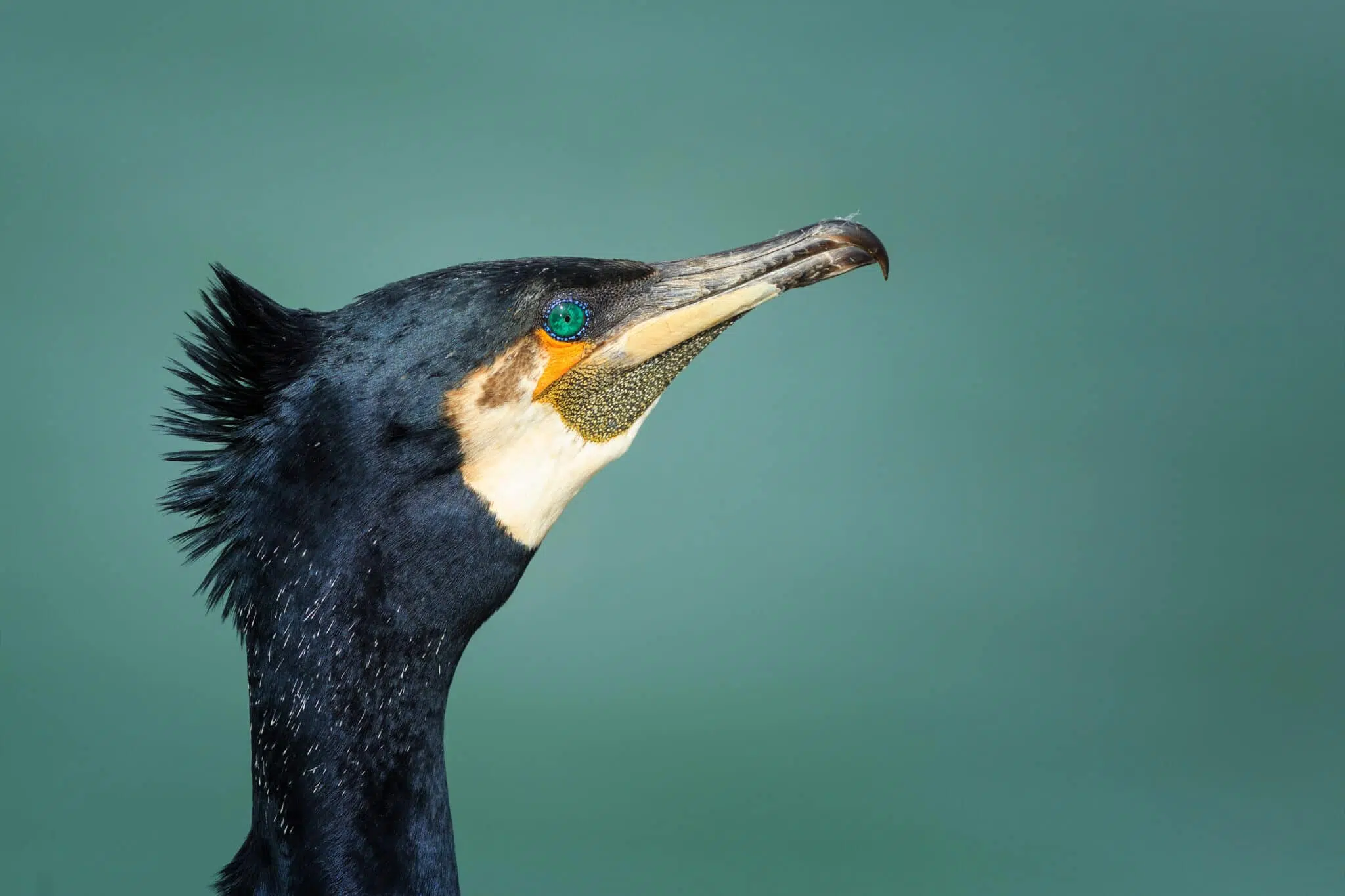Seabird of the month: Great Cormorant (Phalacrocorax carbo)

IUCN status: Least concern (Global and Europe)
Global population: 1,400,000 to 2,100,000 individuals. The European breeding population is estimated between 828,000 and 1,030,000 mature individuals
The description
wingspan: 121 to 160 cm
Lifetime: more than 10 years. The oldest great cormorant on record was over 21 years old.
Distinct features: Great cormorants are large birds with long, thick necks. Their black plumage has a blue-green metallic sheen. Their powerful beak is greyish with white spots around its base. Their legs are dark and long. Males are generally larger and heavier than females. In flight, this seabird can be recognized by its brief glides, interrupting its active flight by slightly shallow wing beats. When in their flock, Great Cormorants fly quite high, in formation. But when alone, they often fly low over the water. Their plumage not being waterproof, they often stand on rocks, wings spread, to dry themselves after fishing.
Main prey:This seabird has a diverse diet that includes fish, amphibians, crustaceans, and nesting birds. They may occasionally dive to catch their prey, mainly in the benthic zone (the lowest level of a body of water) and above 10 meters. They are generally solitary eaters, but they can form large fishing herds in some areas.
Reproduction
Their breeding period varies geographically, but peaks between April and June. This species breeds in mixed colonies, hosting between tens and several hundred pairs.
Pairs often use the same nest site year after year, near wetlands, rivers, sheltered coastal waters, or man-made structures. Nests are built in trees, on cliff edges or on the ground on rocky islands.
Males usually choose the nest site and gather building materials, such as sticks, for the female who usually builds it. They lay a clutch of three to five eggs, which are pale blue or green, and sometimes covered in a white chalky coating. These eggs are incubated for about a month.
Distribution of population
In Europe, two subspecies are traditionally recognized: Phalacrocorax carbo sinensis on the mainland and Phalacrocorax carbo carbo over the British Isles and Norway.
Several studies have shown that this species is capable of foraging up to 20-25 km from its wintering site or breeding colony, but most foraging trips are limited to within 10 km of the colony. Northern populations could make long migratory journeys.
The species shows a typical chain migration pattern in northern Europe, where northern populations (Ph. c. carbohydrates) winters in the breeding range of more southern populations (Ph. c. sinensis) that moved further south.
Main threats
- Hunting and poisoning (persecution by the aquaculture industry)
- Moving offshore renewables
- By-catch
- oil spill
- Viral diseases
- Climate change
- Recreational activities
- Pollution at sea and on land
BirdLife and the Great Cormorant
Some members of the European Parliament are insisting on an EU-wide “management plan” for this seabird, with the aim of reducing the “impact” of cormorants on fishing. BirdLife partners have been studying and monitoring cormorants for many years, and evidence shows that population management is not an appropriate option to address cormorant-fishery interactions. In fact, it would have no impact on conflict sites.
BirdLife’s position is that any economic damage to fisheries must be assessed locally on a case-by-case basis, and solutions must be site-specific. The Great Cormorant is protected under the EU Birds Directive, which means it is illegal to disturb, capture or kill cormorants – except under the Article 9 derogation regime. Non-lethal measures to manage Cormorant-fishing interactions already exist, such as audio and visual deterrents.
Instead of costly and ineffective deadly measures, the EU should develop and test more alternative measures to prevent any harm, while having minimal impact on ecosystems.
Interesting facts
A Danish study suggested that cormorants have excellent underwater hearing, a surprising feature for an animal that spends most of its time out of water. Foraging for food underwater can be difficult for the sensory apparatus of birds, as their underwater visual acuity is no better than that of humans. Thus, birds can use other senses to catch their prey, such as hearing. But due to human activities, the ocean is no longer a quiet place and the noise generated by people can pose a threat to vulnerable species living or feeding at sea.
Throughout Eurasian culture, cormorants have always been decried for being the “enemy” of fishermen. They are among the few seabirds that have not adopted a complete pelagic life. But since ancient times, the Chinese have lived with them as companions. Chinese fishermen kept docile birds on their boats to help them fish, bringing back what they caught in exchange for a few smaller fish for food. This ancient fishing tradition is a dying heritage. Take a look in this video.